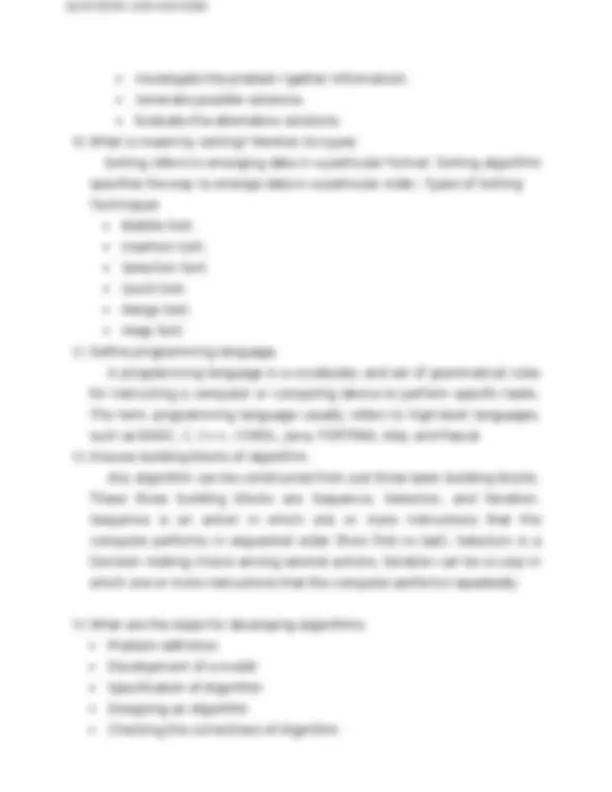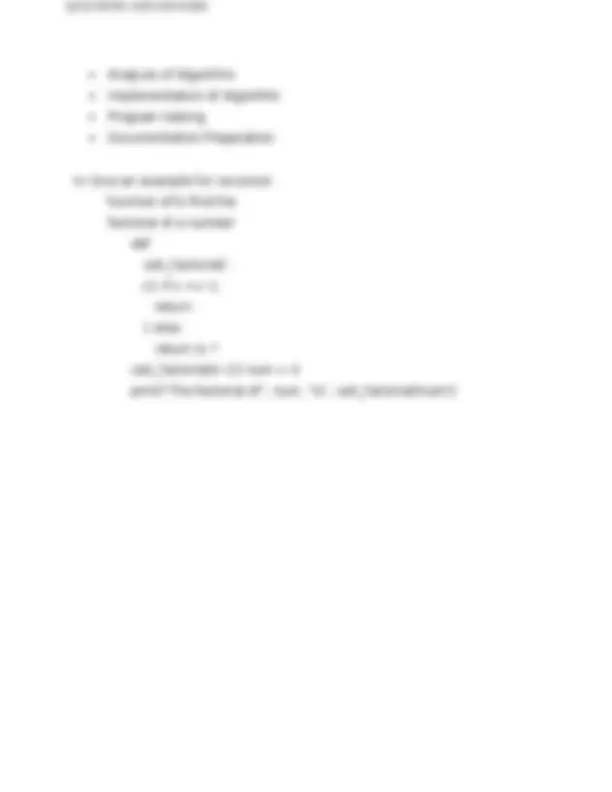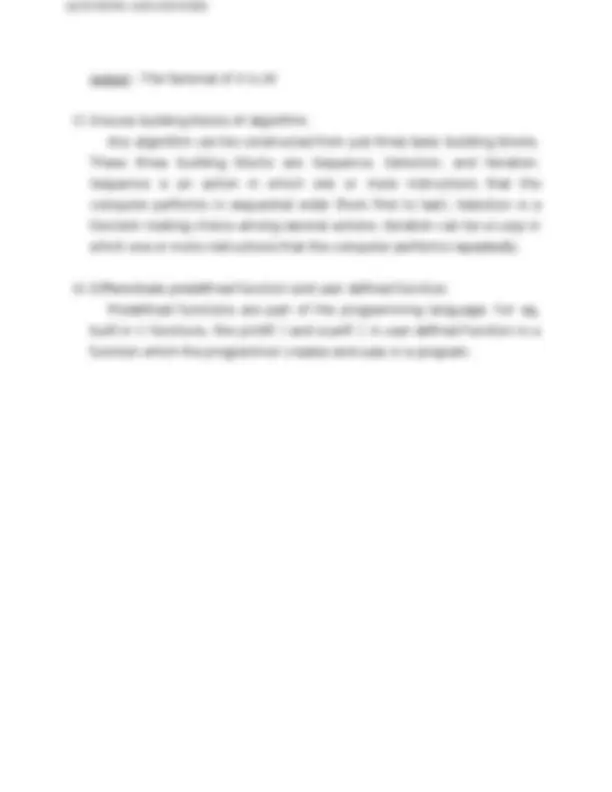





Study with the several resources on Docsity

Earn points by helping other students or get them with a premium plan


Prepare for your exams
Study with the several resources on Docsity

Earn points to download
Earn points by helping other students or get them with a premium plan
Community
Ask the community for help and clear up your study doubts
Discover the best universities in your country according to Docsity users
Free resources
Download our free guides on studying techniques, anxiety management strategies, and thesis advice from Docsity tutors
A brief introduction to problem-solving and Python programming. It covers topics such as algorithms, programming languages, recursion, control flow statements, lists, and iteration. It also explains the concept of towers of Hanoi and how to assess problem-solving methods. useful for beginners who want to learn the basics of problem-solving and programming using Python.
Typology: Exercises
1 / 5

This page cannot be seen from the preview
Don't miss anything!




PROBLEM SOLVING and PYTHON PROGRAMMING Unit I
linked lists. Many programming languages provide support for list data types, and have special syntax and semantics for lists and list operations.
Analysis of Algorithm Implementation of Algorithm Program testing Documentation Preparation
output : The factorial of 4 is 24